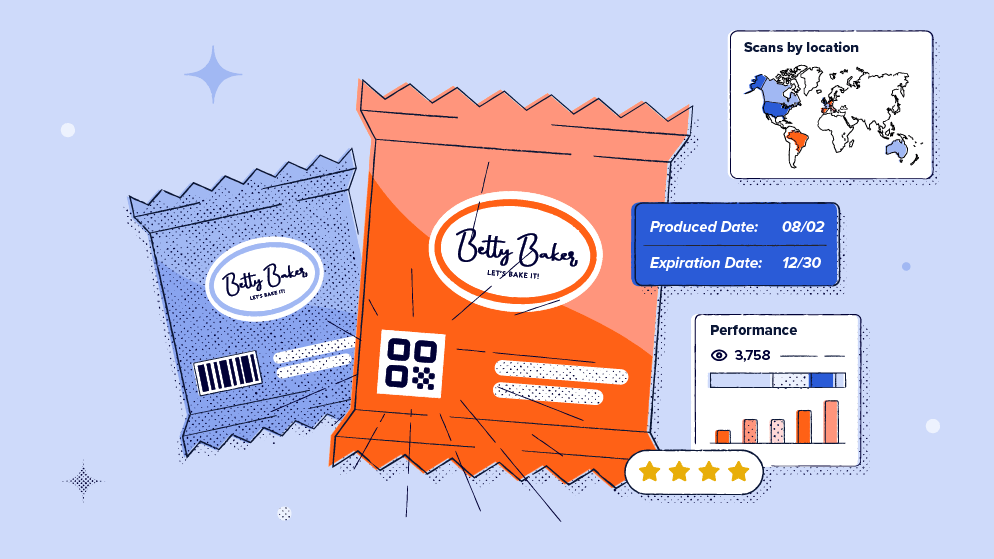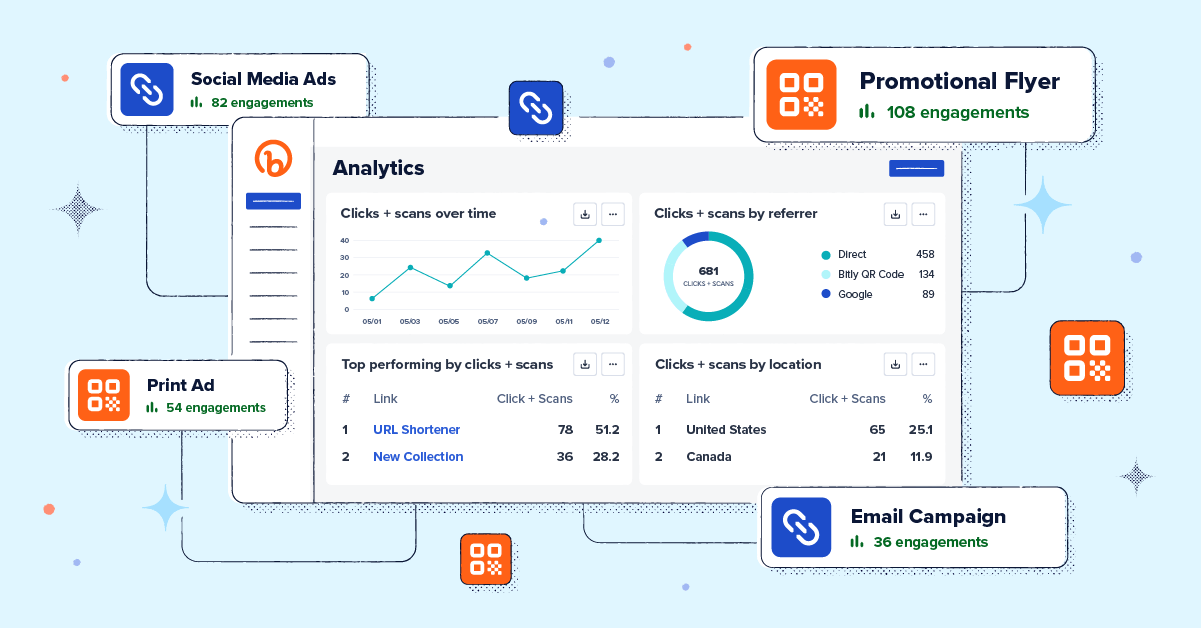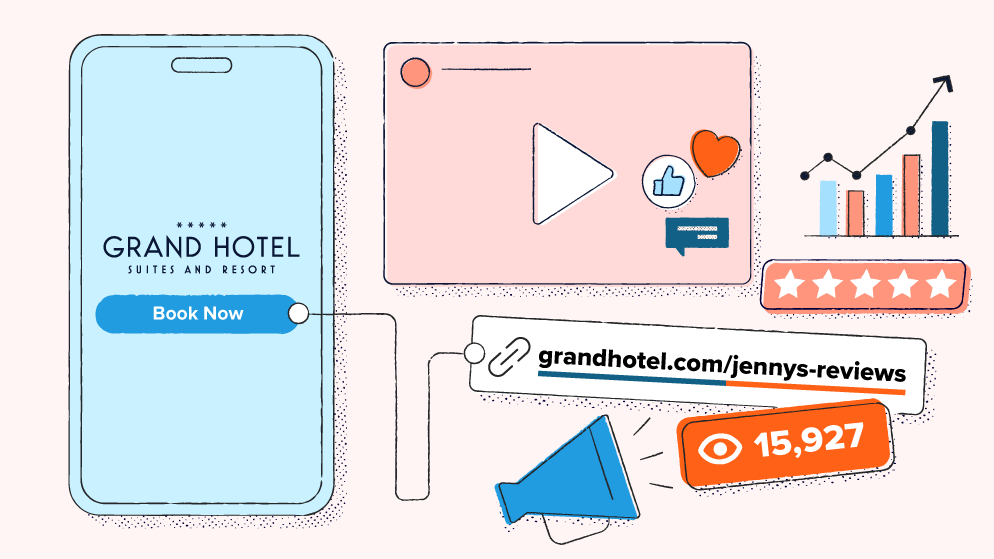Would you rather leave the success of your marketing efforts to chance or know for certain which campaigns will resonate with your audience? Every marketer would opt for the latter if given the choice, but unfortunately, crystal balls aren’t quite part of the marketing tech stack yet.
What we do have is data—information that’s key to understanding your customers and crafting experiences (as well as products and services!) that they’ll genuinely love. If you want to make better marketing decisions and get rid of the guesswork around who your audience is and what excites them about your brand, leaning into data-driven marketing is key.
Let’s explore how data helps you understand your audience, what data-driven marketing looks like across industries, and how brands are using Bitly Analytics to make data-driven marketing decisions.
What is data-driven marketing?
Data-driven marketing is simply an approach to marketing where decisions and actions are based on insights from the analysis of various types of data. This approach involves collecting, interpreting, and leveraging data from customer interactions, preferences, behaviors, and engagements across multiple channels.
With this data in hand, marketers can then make informed decisions to personalize campaigns, target specific audiences more effectively, optimize strategies, and enhance the overall customer experience.
If that sounds intimidating to you, don’t sweat it! Whether you’re running your own business or part of a global marketing team, anyone can tap into the power of data with the right tools.
What can data tell you about your audience?
How well do you know your customers—what they like and dislike, why they buy, where they hang out, and how they learned about you? While it would be pretty tricky to sit down for coffee with every one of them to ask these questions, you can learn a ton about your audience based on interactions with your brand through online and offline channels. That’s where data and analytics take center stage.
The most valuable insights about your customers stem from the channels where they interact with your brand and the data you can gather there, such as:
- Website visits and their duration
- Engagement on social media via likes or comments
- Instances where they mention or share your content
- Email open rates and clickthrough statistics
- Scans of QR codes from your products or physical advertisements
- Clicks on shortened links leading to your website
When you review these metrics—and how the numbers change over time—you can quickly gain a sense of what people love most about your brand. You can see which campaigns or posts perform better than expected, showing that they resonated with your audience. You can also look at the data to learn what’s not working—which channels your customers don’t use or which calls to action aren’t prompting them to learn more.
That data not only shows you how marketing campaigns are performing, but it paints a picture of who your audience is and how they connect with your brand. The more time you put into marketing analytics, the more you’ll understand your audience and what they like—then, you can create content that clicks with them and, ultimately, drives more sales.

How to approach data-driven marketing
Get ready to tap into your inner scientist and data nerd! First, look at your marketing channels and the data that’s available to you, and ask questions as you review the data. Can you identify any patterns in what has led to increased engagement or sales? Which campaigns have been successful, and what tactics should you try next?
From there, it’s time to get experimental. For instance, maybe you notice that your brand has a sizable following in a city or country you wouldn’t expect. Your next step might be to try geographic digital ads or physical marketing tactics in those locations (like billboards or flyers). Analytics is the secret to learning what content and messaging connect with your audience and what leads them to sign up for your newsletter or make a purchase.
Maybe your Bitly Analytics dashboard shows that a certain social media channel is your most common referrer to your website, so you decide to invest in more paid ads there. The insights from that experiment give you even more data to analyze, and the cycle of data-driven marketing continues.
With each tactic you try or trend you notice, think critically and ask yourself deeper questions:
- What about this content is connecting with our customers?
- What change did we make when we saw a spike in traffic or click-through rates?
- What do we learn about our audience from these metrics?
Thoughtful questions about your audience lead to insightful answers that help you make more effective marketing choices.
The power of audience data across industries
Whether you’re a tiny startup or a huge corporation, knowing your audience is key to getting through to your customers. Here are a few examples of how different industries can use data and analytics to learn more about their customers and amplify the impact of their campaigns.
Retail
In the retail world, every visit and purchase (whether online or in-person) offers the chance to understand your audience and connect with your customers. Use details from digital interactions like email opens and clicks, time spent on your site, and conversion rates from website visitors to buyers to learn which offerings your customers love. From there, adjust your marketing campaigns to lean into what’s working for your audience.
Learn about in-store engagement through QR Code scan data from in-store displays or by using QR Codes to offer weekly ads or coupons. Scan data can reveal what your audience is excited about and, if you have multiple retail locations, you can quickly see which stores are performing best and replicate their success elsewhere. All of that scan data is available within Bitly Analytics, so you can see the data in aggregate across all stores or drill down into specific locations to explore deeper.
Consumer Packaged Goods
Data is the secret sauce for consumer packaged goods (CPG) brands big and small. This intel helps CPG brands understand what products, messaging, or special offers “click” with their buyers, so they can drive more sales through targeted marketing strategies and tailored customer experiences. Whether you’re selling direct to consumer (DTC), through major retailers, or both, you need to know how customers found your brand, what piques their interest to learn more, and why they buy over and over again.

For instance, you can use Short Links across social media channels to see how many people are clicking through to your site, where they’re located, and what platform they came from. Maybe you’re promoting a seasonal special offer and want to test out messaging or creative assets on Facebook. Create unique Short Links for each ad and instantly see which ads are driving the highest click-through rates.
CPG brands can take data-driven marketing offline, too, by adding QR Codes to every product you sell. Give shoppers more information, make it easy to reorder or subscribe, and look at scan data to understand your audience’s engagement patterns and desires.
Hospitality
For hotels, resorts, and entertainment brands, it’s essential to get every touchpoint right. After all, the key to driving repeat customers is providing an incredible experience for them! That’s why understanding guest preferences and behavior is so important.
Hospitality brands can spotlight their most appealing amenities or services through QR Codes used on the premises or in-room and look at scan data to uncover which amenities are seeing the most interest. They can also use Short Links in guest SMS communications to highlight special promotions and test when these messages are sent out—like before the guests arrive or during the stay—to get data-driven insights into the most optimal times for presenting these enticing offers.
Whether it’s to highlight exclusive offers, promote local attractions, or ask for customer feedback, each interaction becomes a source of invaluable information that you can use to create a more personalized and engaging guest journey.
5 examples of data-driven marketing in action
Want to see the power of analytics in action? Check out how these five brands improved their marketing using data from customer engagement and interactions
1. Make the most of first impressions with analytics
When your brand moves into a new market, you need to hit the ground running, like Daily Harvest did when they rolled out their healthy food products to Kroger stores across the US. Since this was a new distribution channel for the brand, they wanted to create touchpoints for customers to learn about Daily Harvest and for Daily Harvest to learn about potential customers.
They installed window clings featuring Bitly QR Codes, which shoppers could scan to get more information about the brand and its products. As an added incentive, Daily Harvest donated $5 to sustainable farming causes every time a customer scanned the codes.
The brand then tapped into the rich data in Bitly Analytics to see where interested customers were located and which stores were driving engagement. They also updated the Bitly QR Code links to send customers to seasonal or time-sensitive campaigns—the flexibility extended the life of their marketing materials and showed highly relevant content to their audience.
2. Maximize the customer experience using data
Does the prospect of sending daily order updates via thousands of customized links sound too good to be true? Koozie Group made the impossible possible—each month, they send 300,000 unique, secure Bitly Short Links every month to keep customers informed about their orders. Customers can use the branded (and trusted) links to quickly check on their orders without even needing to sign in.
Not only do Short Links give Koozie Group peace of mind about the security and reliability of the links, but they also give the brand valuable audience data and insights. The team can view which links are being clicked and even see which devices customers are using to open the link within Bitly Analytics. If users are visiting from their mobile devices most often, for instance, Koozie Group knows to prioritize optimizing for that channel.
3. Track campaign performance to make smarter choices
Measuring your marketing campaigns can feel like your cat chasing an elusive laser pointer—exhausting and seemingly impossible to pin down. Feline-friendly cat food brand Smalls knew this struggle all too well until they started looking to Bitly Short Links to track their influencer campaigns at scale.
The Smalls marketing team might be small-but-mighty, but they’re typically running 10 to 20 different influencer campaigns at any given time. That’s quite the roster! To keep tabs on how all of those campaigns are performing—and make better decisions about current and future influencer partnerships—they dig into Bitly Analytics to see how their unique trackable Short Links are being engaged with in real-time.
4. Capture when customers change channels
If you’re looking to move customers from one channel to another—like converting from retail to DTC—QR Codes are the perfect tool for not only driving those conversions but also measuring them. Curology is Exhibit A: The skincare brand uses Bitly QR Codes on booklets included with their skincare kits, encouraging customers to claim a free offer.
The Curology team says that this offer is their top driver of conversions from retail to DTC, which they can measure in real-time using Bitly Analytics. They’ve also used the data to double down on tactics that are working, printing QR Codes with the offer on individual product unit cartons. Customers can scan the QR Code to redeem their free trial as soon as they open the product.
That’s the power of analytics—once you know that a tactic or channel is working, you can spend your time and budget more effectively for deeper connections with even more of your customers.
5. Learn about (and tap into) your brand’s raving fans
Want to find your brand’s biggest fans? Give them the chance to vouch for you in a fun and exciting way just like Modus Brewing did. When the Aussie beer brand was in the running for the Australian Craft Beer Awards Hottest 100 Craft Beer competition, they used Bitly QR Codes on each can to encourage people to vote for them. While enjoying a cold one, fans could simply scan the QR Code and cast their vote for their favorite beer, which ultimately helped Modus Cerveza place 30th on the list.
Behind the scenes, the Modus team tracked every QR Code scan to measure their efforts and see how their fans interacted with the campaign. They could see the data from each interaction week-over-week—and not just for the sake of the competition. QR Codes showed them how each asset was performing, from posters to stickers, which helped them invest more marketing dollars in channels that connected with their customers.

Understand your audience with Bitly Analytics
In an omnichannel world, customers are engaging with your brand through both online and offline connection points. To make your marketing the best it can be, you need to capture each one of those interactions and learn everything you can about your customers—then use data-driven marketing approaches to create stronger connections.
Bitly QR Codes let you turn in-person interactions into digital connections and Short Links let you create memorable, on-brand connections with your customers. Now, with Bitly Analytics, it’s easier than ever to understand your audience’s behavior from one central location.
At a glance, review your geographic data, top-performing campaigns, most popular referring channels, and more. Best of all, you’ll be able to quickly and easily learn about your audience so you can produce and publish more marketing content they’ll love and drive sales along the way.




